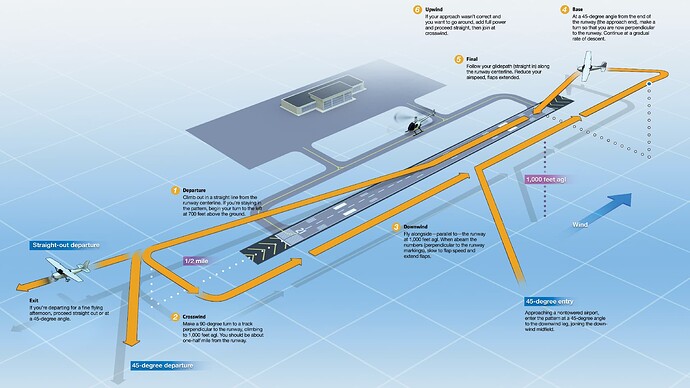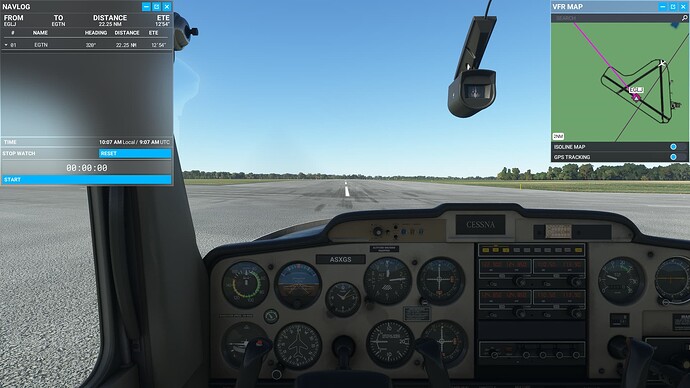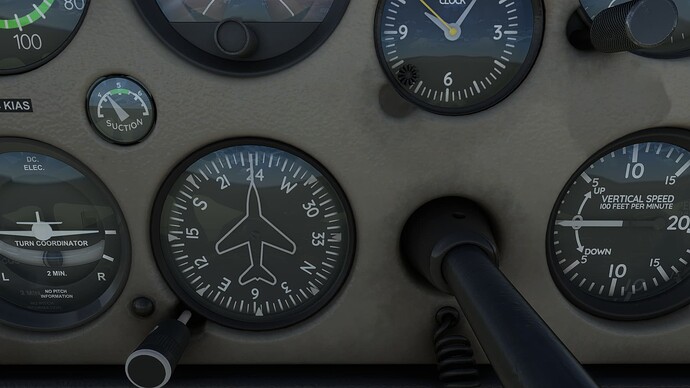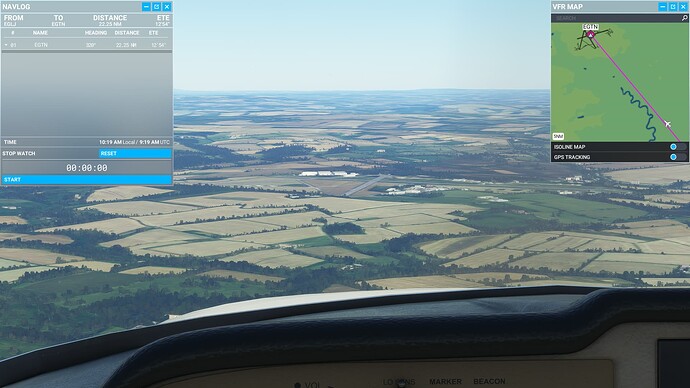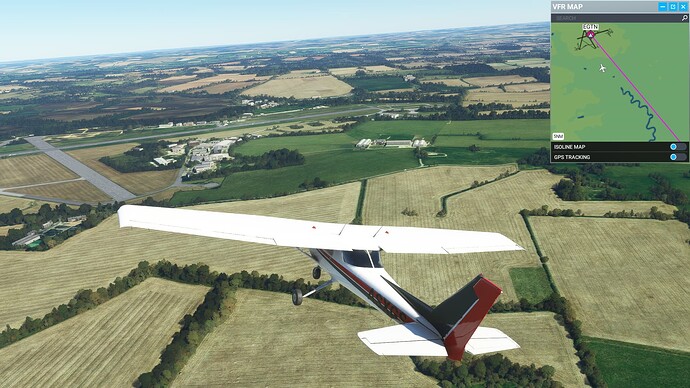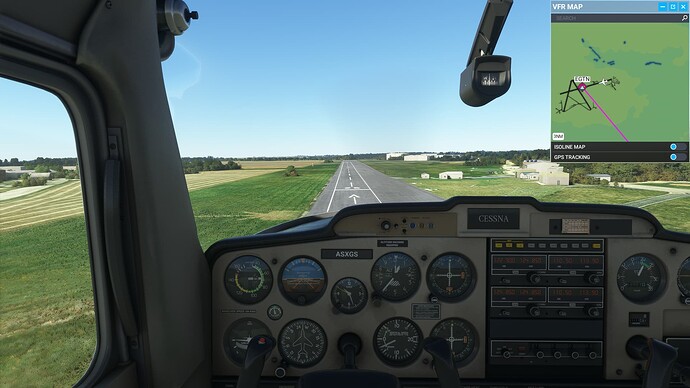Ok, here’s a very simple example. This is mostly a situational awareness lesson, so don’t take anything else I do as being the aviation bible truth.
To start, I don’t know how comfortable you are with compass directions, so I’m just going to throw this up here.
Notice that all of those directions have the reciprocal listed above it. The “Add 2, subtract 2” or “Subtract 2, add 2” rule of thumb works pretty well but requires a little figuring in a few cases. So as always, sanity check your work. If it doesn’t make sense, it’s probably not right.
We’re going to start from EGLJ. Notice that when you zoom in, the runway layout appears. The sim automatically picked Runway 24 for us(heading 240, or roughly southwest). You can see the winds are 270 degrees @ 4kts. So, this is a good runway which will allow us to take off into the wind.
[Remember, the winds blow, they don’t suck. So, 270 degrees is where the wind is coming from, not going to.  ]
]
Our destination is going to be EGTN. The winds are the same there, so the sim has picked Runway 26. Note the blue course line coming in from the southeast. You can already tell that we are going to be intercepting the runway at roughly a right angle.
We can begin planning our field entry right now. We’re going to choose a 45 degree intercept to a left hand pattern. It called a left hand pattern because all turns once established within it are to the left. It’s a nice, predictable entry that allows everyone to see us coming and hopefully allows us to see other traffic in the pattern, if there is any.
This pattern will keep us on the south side of the field. In other words the near side as we look at it.
Since we aren’t quite coming in organically for the 45, our plan is to cut a little to the left until we can turn back right for the 45 entry properly.
Here we are on Runway 24. I’ve pulled up the map and the Nav Log. Note the course to EGTN is 320 (Northwest). We are heading 240 (Southwest). So we know that we’re going to need to make about a 90 degree right turn on climb out.
I’m being very generic in my general directions. You will of course attempt to fly precisely, but in the big scheme of things, we are just trying to get a big picture of what we are trying to do.
Also, here is a close up of the Directional Gyro. Note that you can easily pick out the reciprocal heading by looking at the bottom of the indicator, 060. Again, 240. 2-2=0. 4+2=6. So, 060.
Fast forward to the arrival. As expected, when we pick up the runway it is at a little over 90 degrees to us. Knowing this in advance not only helped plan our arrival, it also helps us not land on the wrong runway!
Pattern entry. If you look at the Nav Map, note that we have allowed ourselves to drift left of course (roughly towards the west) so that now we can turn back right and intercept the pattern on what will eventually be an at least approximate 45 degree angle, if a little past midfield.
After judging our distance from the runway, we turn right once again onto downwind. And again, we’re looking for the reciprocal of our landing runway heading (Runway 26, so 260, minus 2, plus 2, 080). Also, note that 080 is at the top of the DG and the reciprocal, 260, is at the bottom.
We’re also going to note that 90 degrees to the left, which is the way that we’re going to be turning onto base, shows a heading of 350. Now we don’t need to figure it out later.
The view out the window. A little bit wide, if I remember my Cessna(ing).
Here’s that left turn to 350 degrees onto base.
And final, heading 260.
So that’s it in very broad strokes. It’s not in any way ALL the things you should look at when planning a flight. But it gives you some general idea on how you can big picture it beforehand.
Hope this helps a bit. 




